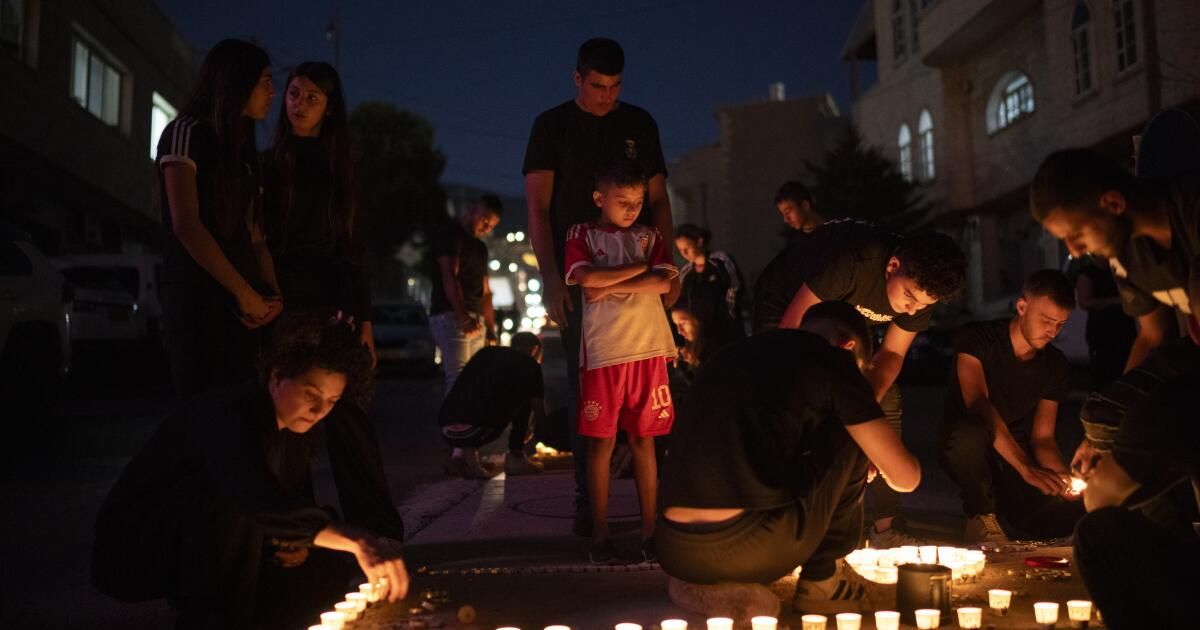After nearly 10 months of constant rocket and drone attacks along the Israel-Lebanon border, Israel and Hezbollah are on the brink of a full-scale war for the first time since 2006. But more terrifying than Hezbollah’s rocket arsenal is the threat that it will launch an Oct. 7-style ground incursion into Israel.
The immediate crisis is a result of what Israeli officials say was a Hezbollah rocket attack that 12 Israeli Druze youths killedSince the day after the Oct. 7 massacre by Hamas, Hezbollah has been firing rockets into Israel on a near-daily basis. While most of the attacks have used anti-tank guided missiles, the group has also used longer-range, more powerful munitions provided by Iran. That was apparently the case on July 27, when Hezbollah is accused of firing an Iranian Falaq-1 rocket toward the Israeli-controlled Golan Heights and striking a soccer field and a playground in the Druze community of Majdal Shams. (Though Israel released data about the rocket and its trajectory linking it to Hezbollah, the group has issued a rare denial of responsibility for the attack.)
Three days later, an Israeli airstrike delicate Hezbollah military commander Fuad Shukr in Beirut. And the next day, an explosion widely attributed to Israel delicate Hamas leader Ismail Haniyeh at a guesthouse in Tehran. The region is now on tenterhooks awaiting retaliation from Iran, Hezbollah and perhaps other Iranian groups, with the risk of escalation and a wider war.
And yet there is hope for a de-escalation. The factors that have prevented Hezbollah from opening a full-fledged second front against Israel since October remain in place. Lebanon continues to suffer from a devastating economic (and political) crisis and most of its citizens are still in the process of being forced to leave. I don't want to Hezbollah wants to drag the country into what would likely be a terribly destructive war. And while Iran is willing to fight to the last Arab proxy, its leaders I don't want to The war could spread beyond its own borders.
But it is too early to count on cooler heads. Hezbollah leader Hassan Nasrallah has vowed to continue firing rockets into Israel until the fighting in Gaza stops. And even if a ceasefire agreement is reached and the rockets stop, more than 60,000 Israeli civilians displaced from their homes along the border with Lebanon will not return until the threat posed by Hezbollah ground forces is addressed. My recent visit to Israel’s evacuated northern border made me understand the extent to which residents of the area fear an October 7-style incursion, distrust their leaders’ security assurances, and will resist returning to their homes without a more convincing response to the threat.
They have good reason to be concerned. The Hamas massacre is a strategy that Hezbollah follows in its textbook. The Israeli military has been actively training for years to counter a Hezbollah plot to overrun Israeli communities, kill and kidnap civilians and undermine Israel’s sense of security. Part of what was unexpected about October 7 was that it occurred on the southern border, not the northern one.
Moreover, after its 2006 war with Israel, Hezbollah built an arsenal of some 150,000 rockets, deployed forces across southern Lebanon and otherwise violated a United Nations Security Council resolution aimed at preventing further conflict.
Displaced Israelis in the north are beginning to understand how close they came to disaster on October 7. When Hamas terrorists crossed the southern border that day, only two Israeli battalions consisting of about 1,000 Israeli soldiers were on the ground. 600 people They covered the entire northern border. Today, about 40 battalions defend that border, but it is difficult to maintain such a deployment over the long term.
Israeli authorities are under enormous pressure to get their citizens to return to the sovereign territory that Hezbollah has depopulated for almost a year. They have indicated that if Hezbollah does not agree to withdraw from the border, Israel will dismantle it by force.
U.S. diplomatic efforts have focused on getting Hezbollah to withdraw all its forces at least 10 kilometers from the border. This would put most of its missiles out of range and make a surprise attack like the one on Oct. 7 much less likely.
Some members of the Israel Defense Forces advocate neutralizing the Hezbollah threat now, while the group has a relatively small part of its extensive forces on the border, Israeli troops are fully deployed in the north, and civilians have already been displaced from the area. But most Israeli officials understand that a war with Hezbollah today would be like no war Israel has ever fought. They would prefer to let the current war end, send exhausted reservists home, allow displaced families to leave the hotel rooms they have lived in for many months, and take a couple of years to restock on ammunition and plan for a war with Hezbollah. But if Israeli civilians cannot return home soon, war may come much sooner than they would like.
Across the country and across the political spectrum, Israelis agree that they can no longer live with a gun to their heads, from the south or the north. The idea that enemies sworn to destroy them can be allowed to amass massive arsenals on their borders is no longer tenable. That means Israel will ultimately have to deal with both Hezbollah's rocket arsenal and its 30,000-strong standing militia. And it is the latter that is most likely to drag Israel into a war that most Israelis and Lebanese do not want.
Matthew Levitt is a Fromer-Wexler Senior Fellow and Director of the Reinhard Program on Counterterrorism and Intelligence at the Washington Institute for Near East Policy and author of “Hezbollah: The Global Footprint of Lebanon's Party of God”, the final edition of which will be published in September.












